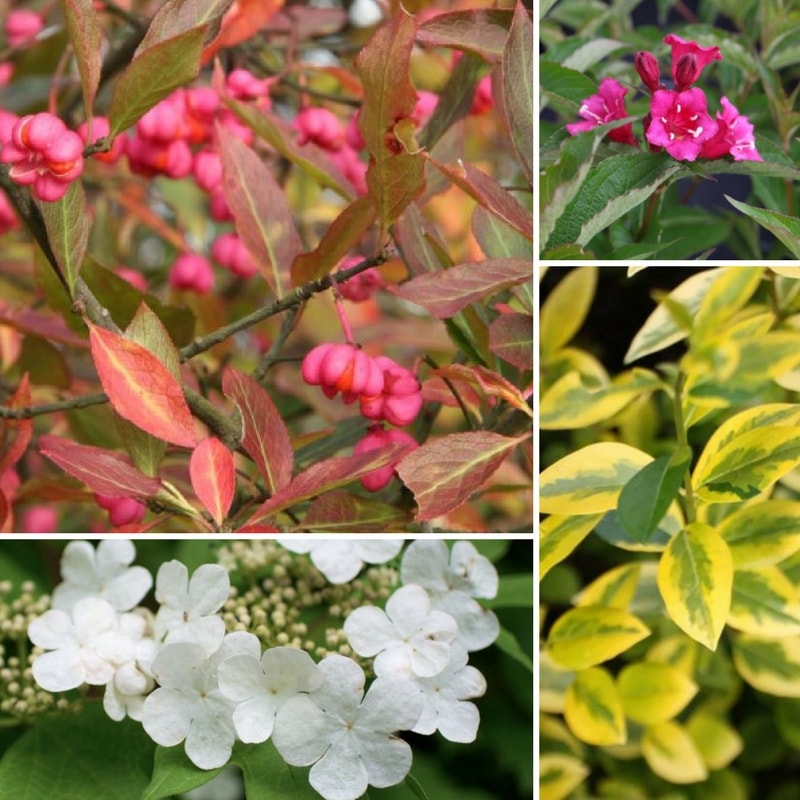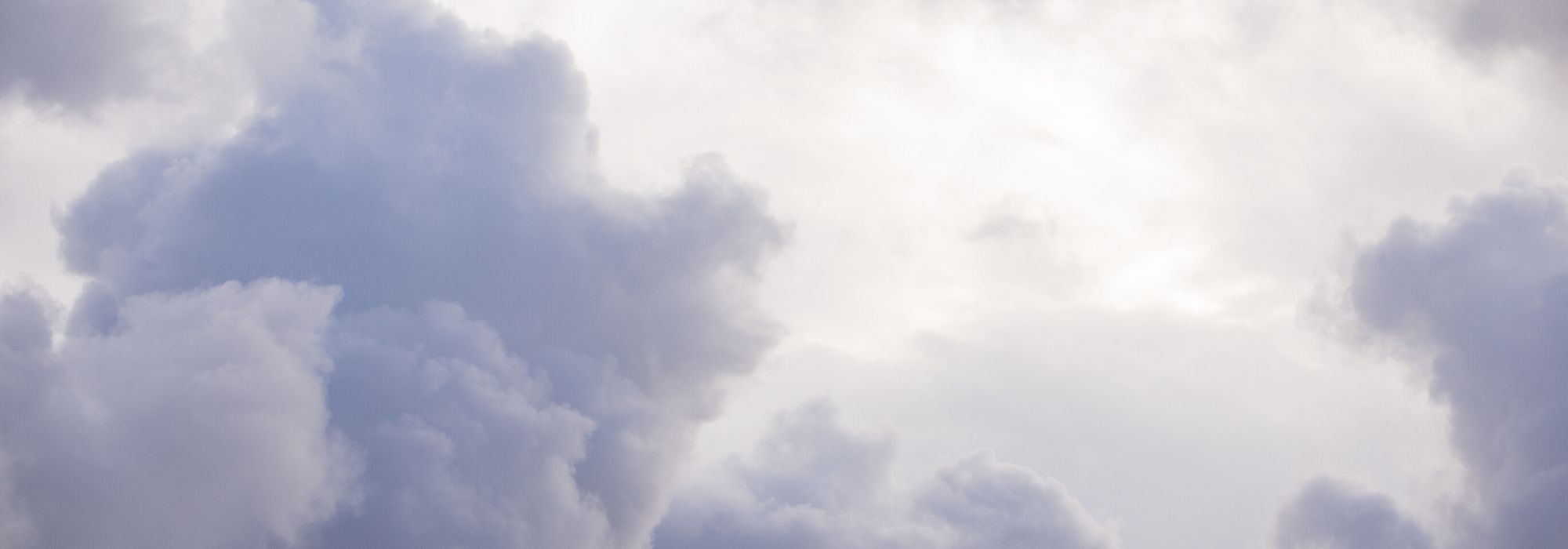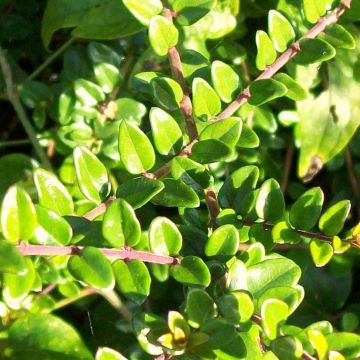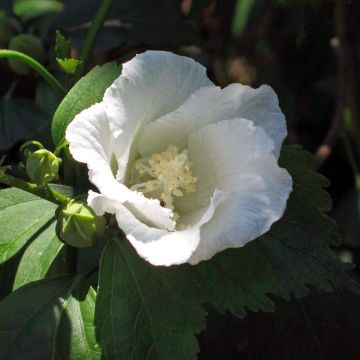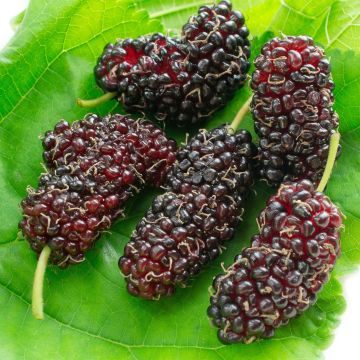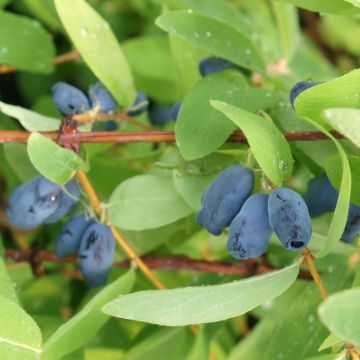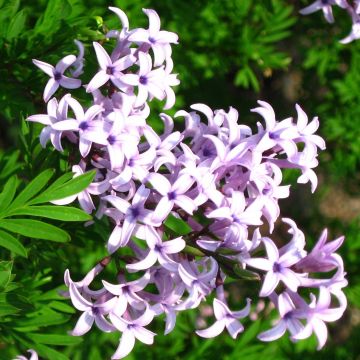

Zanthoxylum piperitum
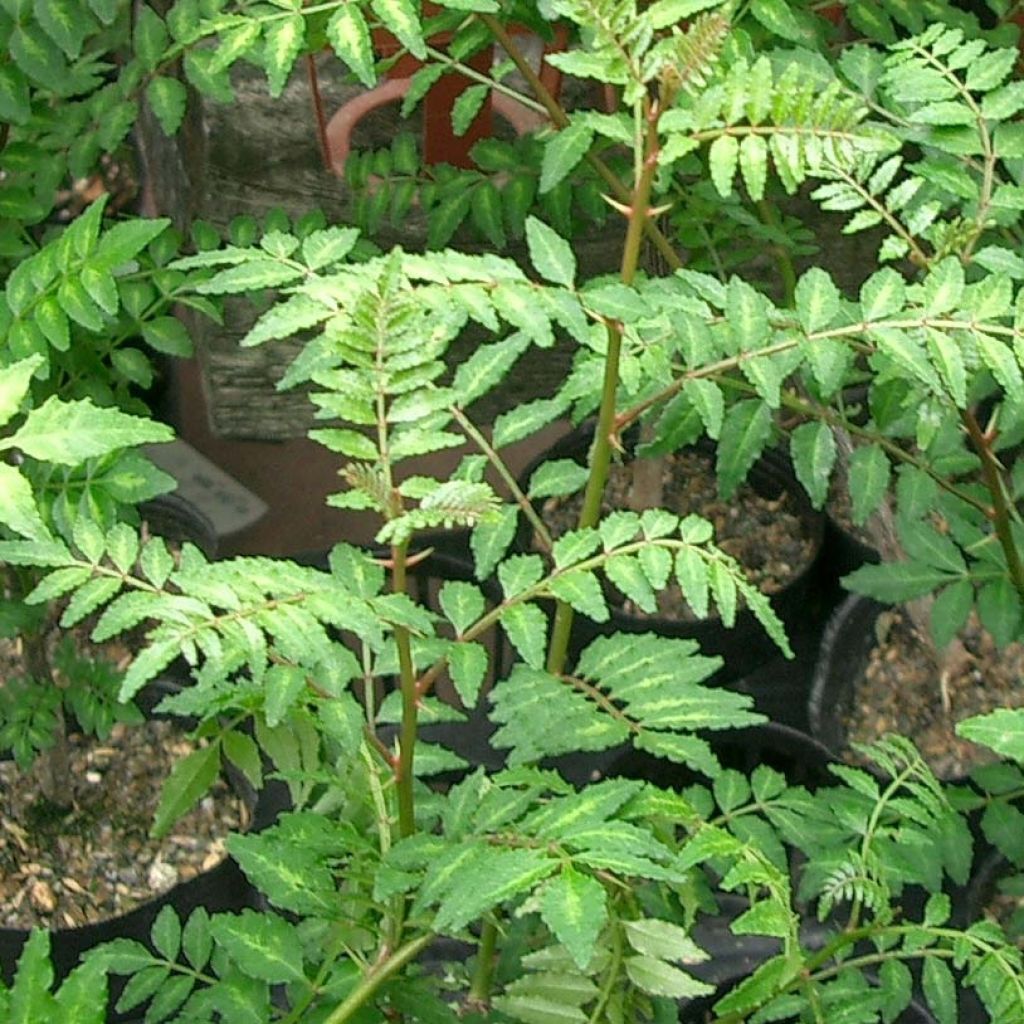

Zanthoxylum piperitum
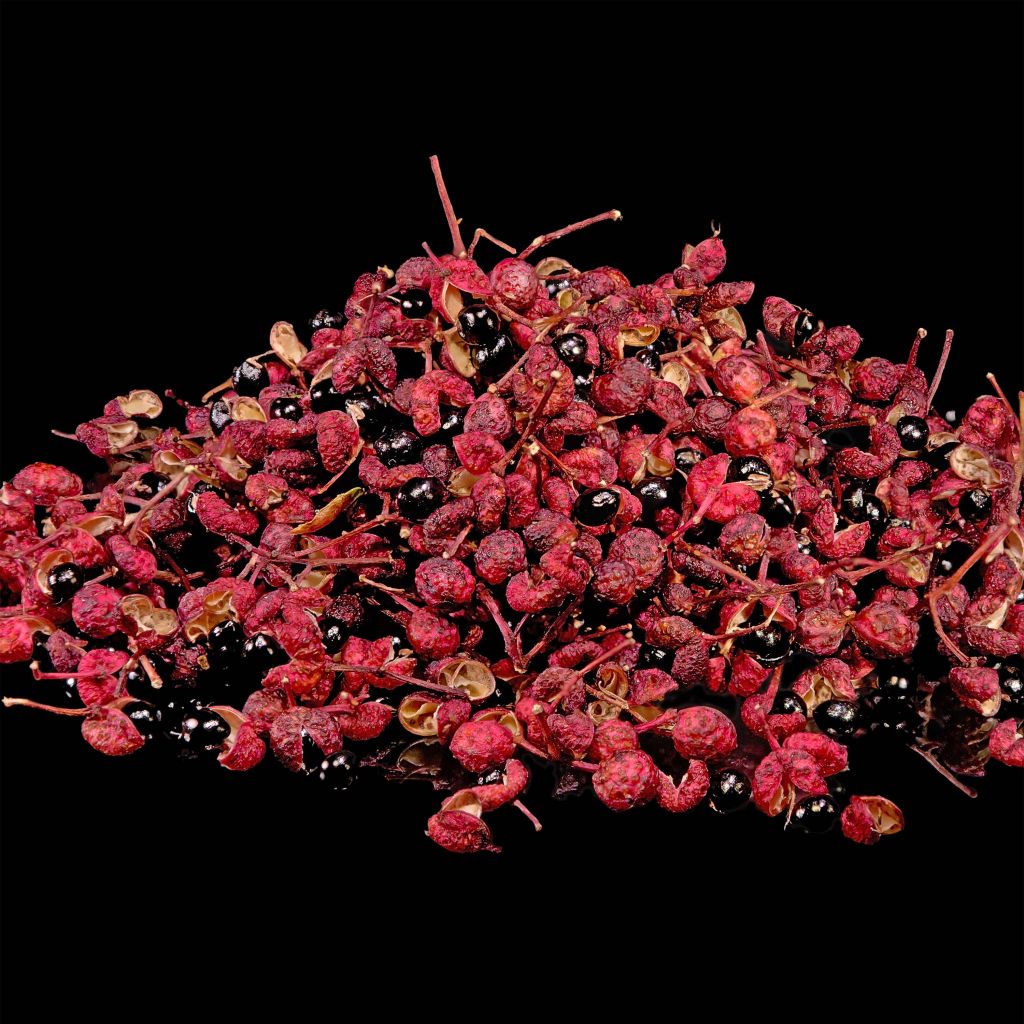

Zanthoxylum piperitum


Zanthoxylum piperitum
Zanthoxylum piperitum
Zanthoxylum piperitum
Sichuan Pepper, Japanese Pepper, Korean Pepper, Sansho, Japanese Prickly Ash
Lovely little tree. Shoots very well.
Elisabeth , 21/10/2024
Special offer!
Receive a €20 voucher for any order over €90 (excluding delivery costs, credit notes, and plastic-free options)!
1- Add your favorite plants to your cart.
2- Once you have reached €90, confirm your order (you can even choose the delivery date!).
3- As soon as your order is shipped, you will receive an email containing your voucher code, valid for 3 months (90 days).
Your voucher is unique and can only be used once, for any order with a minimum value of €20, excluding delivery costs.
Can be combined with other current offers, non-divisible and non-refundable.
Home or relay delivery (depending on size and destination)
Schedule yourself the delivery date,
and choose your date in cart
This plant benefits a 24 months rooting warranty
More information
We guarantee the quality of our plants for a full growing cycle, and will replace at our expense any plant that fails to recover under normal climatic and planting conditions.
Does this plant fit my garden?
Set up your Plantfit profile →
Description of Zanthoxylum piperitum
The Zanthoxylum piperitum, sometimes called the Clavalier, is undoubtedly the best-known and most cultivated small Asian tree known as the Sichuan Pepper. Its remarkably aromatic berries are used, especially in Japanese cuisine, under the name of Sichuan Pepper. Its discreet spring flowering is followed by the famous small pink-red berries, whose dried and ground pink husk is used as a spice. The combination of the pink fruits and the foliage taking on shades of golden purple in autumn is superb, and it bears fruit from a young age. It is perfect in a free hedge, and its young, thorny branches are ideal for a defensive hedge. For this reason, it is best to place it far enough from a walkway and wear gloves for harvesting!
Originally from Sichuan province, located in southwestern China, the Zanthoxylum piperitum is widely found from Japan to Vietnam. It is part of the same family as citrus trees, the Rutaceae family, with which it shares a highly aromatic foliage. The Zanthoxylum genus can be hard to tell apart because of the number of leaflets or the shape of the flowers, thorns, or main veins in the leaves. This large bush loses its foliage in winter, occasionally tolerates -18°C (1°F) and develops in well-draining and sufficiently deep soil. Late frosts can, however, harm flowering and burn its young shoots. The Chinese pepper tree is tough and can grow in almost any condition except for dense shade.
Growing rapidly in cool and fertile soil, this small tree reaches an average height of 4m (13ft) with a roughly equal span at maturity. Its habit is elegant, naturally bushy and spreading, supported by flexible branches. The trunk and young stems are adorned with thin, flat thorns that widen significantly at the base over the years while their tips become blunt. They eventually form curious growths that resemble large warts. The branches bear deciduous leaves arranged alternately, 7 to 15 cm (3 to 6in) long, divided into 11 to 21 small ovate and shiny leaflets, toothed along the edges, produce essential oils and small spines. When crushed, they emit a scent that is spicy, woody, lemony, and slightly peppery but mild. They are a beautiful dark green, taking on yellow, orange, and rose-purple tones in autumn before falling. The flowering already appears on plants 3 or 4 years old (from sowing). It occurs in May-June, more or less early depending on the climate, on one-year-old branches. It consists of small clusters or cymes, 3 to 5 cm (1 to 2in) in diameter, composed of small cup-shaped flowers with a yellow-green colour. This shrub has both male and female flowers. After pollination, round fruits form on the female flowers, 3 to 5 mm (1in) in diameter, spherical and verrucose. The fruit is pink-red when ripe, opening to reveal black and shiny seeds. Only the husk is consumed once dried and ground. Note that the Clavalier tolerates pruning very well, even severe pruning. If the plant is self-fertile, fruit production will be greater if you plant 2 or more in the garden.
In the kitchen:
It's important to know that the pink berries from the Sichuan pepper tree are different from the "pink berries" or "pink pepper" sold in the spice section, which come from another tree called Schinus terebinthifolius from South America.
If you're cooking, you can use the pink "skin" of the Zanthoxylum fruits to add flavour to preserves, rice, salads, and cooked dishes. This spice is essential in traditional Asian cuisine. Dried and powdered leaves are also used, especially in Japan, as they have a similar aroma to the berries.
In the garden:
To create a charming garden, you can plant a small tree with attractive bark. It's perfect for an English-style or naturalistic garden. You can also plant it alone to showcase its beauty. To do this, prune the lowest branches up to 1m (3ft) from the ground.
This tree can also be planted in an untrimmed hedge alongside other shrubs like dogwoods, rowans, viburnums, Osage oranges, ornamental apples, cherries, or honey locusts. Its young branches are thorny, making it an excellent choice for a defensive hedge. If you want to use it this way, plant it with Poncirus trifoliata, Rosa moyesii, Pyracantha, hawthorn Crataegus monogyna, Japanese quince Cido, or sea buckthorn.
Zanthoxylum piperitum in pictures
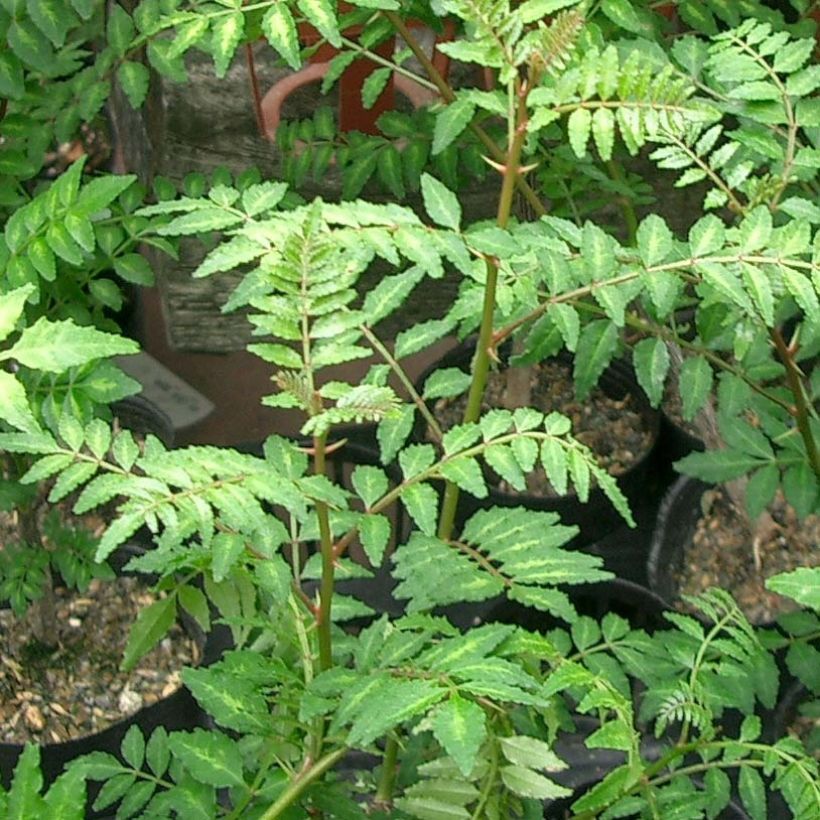



Plant habit
Flowering
Foliage
Botanical data
Zanthoxylum
piperitum
Rutaceae
Sichuan Pepper, Japanese Pepper, Korean Pepper, Sansho, Japanese Prickly Ash
China
Other Zanthoxylum - Prickly Ash
View All →Planting of Zanthoxylum piperitum
The Zanthoxylum plant can be planted in spring or early autumn, depending on your climate. If you live in cooler areas, plant in spring. In drier, warmer regions, plant in early autumn. Pick a location protected from cold and dry winds, which can harm the plant's flowers and young shoots. The plant needs sunlight or partial shade to grow well. Avoid planting in dense shade, as this will stop it from flowering and fruiting.
The Zanthoxylum plant likes a deep, loose, fertile soil that drains well. It can grow in soil with clay and limestone and can adapt to acidic soil if it's not too poor. The plant grows quickly if the soil is slightly moist in summer. Once cultivated for three years, it can survive without watering in summer, except in hot and dry climates. The plant can handle temperatures as low as -18°C (1°F), but it is more sensitive to cold in its early years, especially if the soil is heavy and wet. If the soil is heavy and wet, add river sand, gravel, or pumice to lighten it. In very cold areas, protect young plants with horticultural fleece and mulch the base.
The Zanthoxylum plant is easy to cultivate and doesn't need much maintenance. For a free hedge, plant one every metre. Prune if necessary in autumn, but remember that this will affect next spring's flowering. The plant isn't affected by any specific pests or diseases in gardens.
When to plant?
Where to plant?
Care
Planting & care advice
-
, onVetted order
Response from on Promesse de fleurs
Similar products
You have not found what you were looking for?
Hardiness (definition)

Photo Sharing Terms & Conditions
In order to encourage gardeners to interact and share their experiences, Promesse de fleurs offers various media enabling content to be uploaded onto its Site - in particular via the ‘Photo sharing’ module.
The User agrees to refrain from:
- Posting any content that is illegal, prejudicial, insulting, racist, inciteful to hatred, revisionist, contrary to public decency, that infringes on privacy or on the privacy rights of third parties, in particular the publicity rights of persons and goods, intellectual property rights, or the right to privacy.
- Submitting content on behalf of a third party;
- Impersonate the identity of a third party and/or publish any personal information about a third party;
In general, the User undertakes to refrain from any unethical behaviour.
All Content (in particular text, comments, files, images, photos, videos, creative works, etc.), which may be subject to property or intellectual property rights, image or other private rights, shall remain the property of the User, subject to the limited rights granted by the terms of the licence granted by Promesse de fleurs as stated below. Users are at liberty to publish or not to publish such Content on the Site, notably via the ‘Photo Sharing’ facility, and accept that this Content shall be made public and freely accessible, notably on the Internet.
Users further acknowledge, undertake to have ,and guarantee that they hold all necessary rights and permissions to publish such material on the Site, in particular with regard to the legislation in force pertaining to any privacy, property, intellectual property, image, or contractual rights, or rights of any other nature. By publishing such Content on the Site, Users acknowledge accepting full liability as publishers of the Content within the meaning of the law, and grant Promesse de fleurs, free of charge, an inclusive, worldwide licence for the said Content for the entire duration of its publication, including all reproduction, representation, up/downloading, displaying, performing, transmission, and storage rights.
Users also grant permission for their name to be linked to the Content and accept that this link may not always be made available.
By engaging in posting material, Users consent to their Content becoming automatically accessible on the Internet, in particular on other sites and/or blogs and/or web pages of the Promesse de fleurs site, including in particular social pages and the Promesse de fleurs catalogue.
Users may secure the removal of entrusted content free of charge by issuing a simple request via our contact form.
The flowering period indicated on our website applies to countries and regions located in USDA zone 8 (France, the United Kingdom, Ireland, the Netherlands, etc.)
It will vary according to where you live:
- In zones 9 to 10 (Italy, Spain, Greece, etc.), flowering will occur about 2 to 4 weeks earlier.
- In zones 6 to 7 (Germany, Poland, Slovenia, and lower mountainous regions), flowering will be delayed by 2 to 3 weeks.
- In zone 5 (Central Europe, Scandinavia), blooming will be delayed by 3 to 5 weeks.
In temperate climates, pruning of spring-flowering shrubs (forsythia, spireas, etc.) should be done just after flowering.
Pruning of summer-flowering shrubs (Indian Lilac, Perovskia, etc.) can be done in winter or spring.
In cold regions as well as with frost-sensitive plants, avoid pruning too early when severe frosts may still occur.
The planting period indicated on our website applies to countries and regions located in USDA zone 8 (France, United Kingdom, Ireland, Netherlands).
It will vary according to where you live:
- In Mediterranean zones (Marseille, Madrid, Milan, etc.), autumn and winter are the best planting periods.
- In continental zones (Strasbourg, Munich, Vienna, etc.), delay planting by 2 to 3 weeks in spring and bring it forward by 2 to 4 weeks in autumn.
- In mountainous regions (the Alps, Pyrenees, Carpathians, etc.), it is best to plant in late spring (May-June) or late summer (August-September).
The harvesting period indicated on our website applies to countries and regions in USDA zone 8 (France, England, Ireland, the Netherlands).
In colder areas (Scandinavia, Poland, Austria...) fruit and vegetable harvests are likely to be delayed by 3-4 weeks.
In warmer areas (Italy, Spain, Greece, etc.), harvesting will probably take place earlier, depending on weather conditions.
The sowing periods indicated on our website apply to countries and regions within USDA Zone 8 (France, UK, Ireland, Netherlands).
In colder areas (Scandinavia, Poland, Austria...), delay any outdoor sowing by 3-4 weeks, or sow under glass.
In warmer climes (Italy, Spain, Greece, etc.), bring outdoor sowing forward by a few weeks.








































